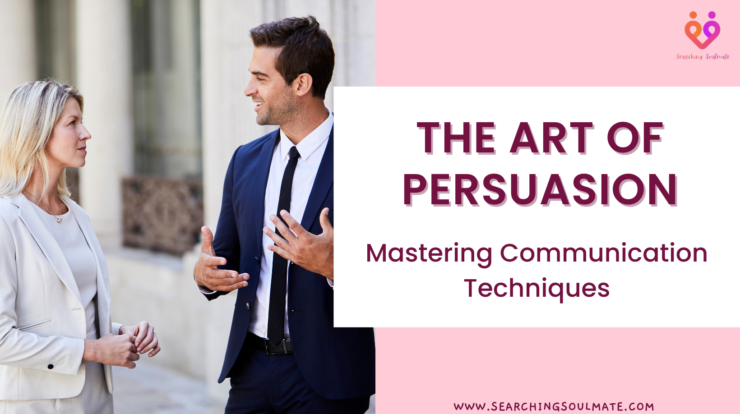
In today’s interconnected world, effective communication is a skill that can set you apart in both personal and professional realms. One of the most valuable aspects of communication is the ability to persuade others. Whether you’re trying to convince a client to choose your product, sway public opinion, or even negotiate a raise, the art of persuasion plays a crucial role in achieving your goals. To be a successful persuader, it’s essential to master the right communication techniques.
- Understanding Persuasion
Before delving into the techniques of persuasion, it’s important to understand what persuasion is and why it matters. Persuasion is the process of influencing someone’s beliefs, attitudes, or actions through effective communication. It’s not about manipulation or deceit but rather about presenting your ideas or proposals in a way that makes them appealing and convincing to others.
2. The Power of Ethos, Pathos, and Logos
Aristotle, the ancient Greek philosopher, introduced the concepts of ethos, pathos, and logos as three pillars of persuasive communication. These principles remain as relevant today as they were centuries ago.
- Ethos (Credibility): Establishing credibility is essential for effective persuasion. People are more likely to be persuaded by someone they trust and respect. To enhance your ethos, you should demonstrate expertise, build trust and always cite reputable sources.
- Pathos (Emotion): Emotions play a significant role in decision-making. To appeal to the emotional side of your audience, try telling compelling stories, using vivid language and addressing the audience’s values and concerns.
- Logos (Logic): Persuasion also relies on presenting a logical and rational argument. To strengthen your logos provide evidence, use sound reasoning and anticipate counterarguments.
3. Active Listening
Effective persuasion is a two-way street. It’s not just about what you say but also about what you hear. Active listening is a critical component of persuasive communication. When you actively listen to your audience, you gain valuable insights into their needs, concerns, and motivations. This information allows you to tailor your message to resonate more effectively with them.
Active listening involves:
- Maintaining eye contact: Show that you are fully engaged and attentive.
- Asking open-ended questions: Encourage your audience to share their thoughts and feelings.
- Paraphrasing and summarizing: Reflect back what you’ve heard to ensure you understand correctly.
- Empathizing: Show empathy and understanding for your audience’s perspective.
4. Clarity and Simplicity
Complexity can hinder persuasion. The more convoluted your message, the less likely it is to be understood and accepted. To avoid this, strive for clarity and simplicity in your communication:
- Use plain language: Avoid jargon and technical terms that may be unfamiliar to your audience.
- Keep it concise: Get to the point and eliminate unnecessary details.
- Structure your message: Organize your ideas in a logical sequence to make it easier for your audience to follow your argument.
5. Building Rapport
Building rapport with your audience is crucial for persuasion. When people feel a connection with you, they are more likely to be receptive to your message. To build rapport:
- Find common ground: Identify shared interests or experiences.
- Show genuine interest: Demonstrate that you care about your audience’s concerns and well-being.
- Adapt your communication style: Tailor your approach to match the preferences and communication style of your audience.
6. Overcoming Objections
In the process of persuasion, you are likely to encounter objections and resistance. Instead of avoiding or dismissing these objections, address them head-on. Acknowledging and addressing objections demonstrates that you have considered different perspectives and are confident in your position.
To overcome objections effectively:
- Listen actively: Understand the objection fully before responding.
- Provide evidence: Offer data, examples, or testimonials that counter the objection.
- Offer alternatives: Suggest alternative solutions or compromises when appropriate.
The art of persuasion is a valuable skill that can open doors and facilitate positive change. To become a master persuader, you must combine the principles of ethos, pathos, and logos with active listening, clarity, and simplicity. Building rapport, using visual aids and storytelling, and addressing objections are additional tools that can enhance your persuasive abilities. Ultimately, effective persuasion is about fostering understanding, building trust, and inspiring action through the power of communication. By mastering these techniques, you can become a more persuasive and influential communicator in all aspects of your life.






